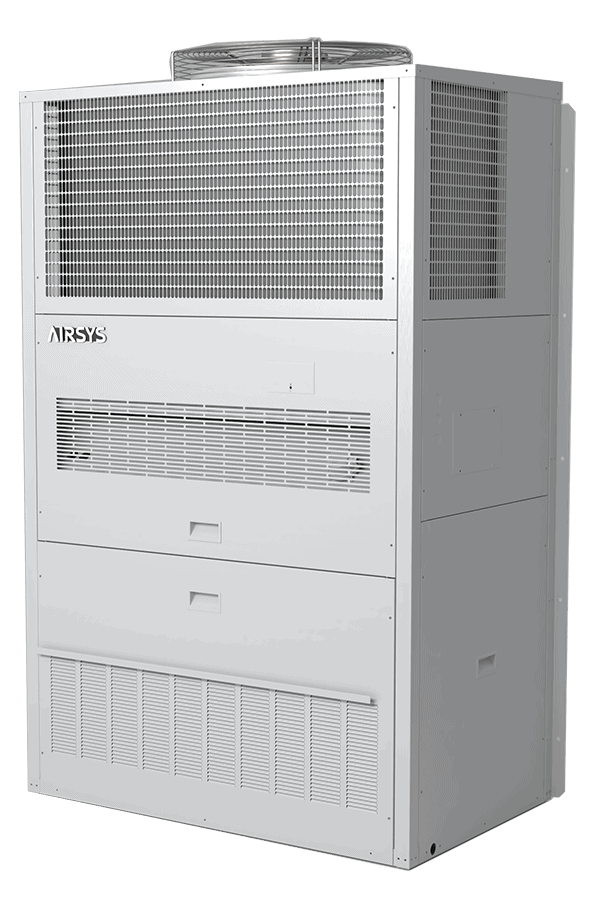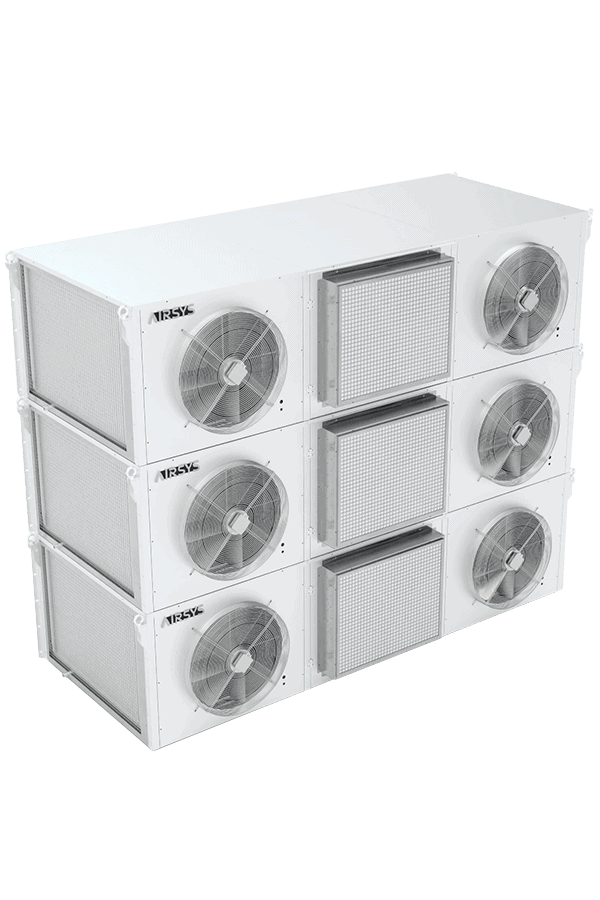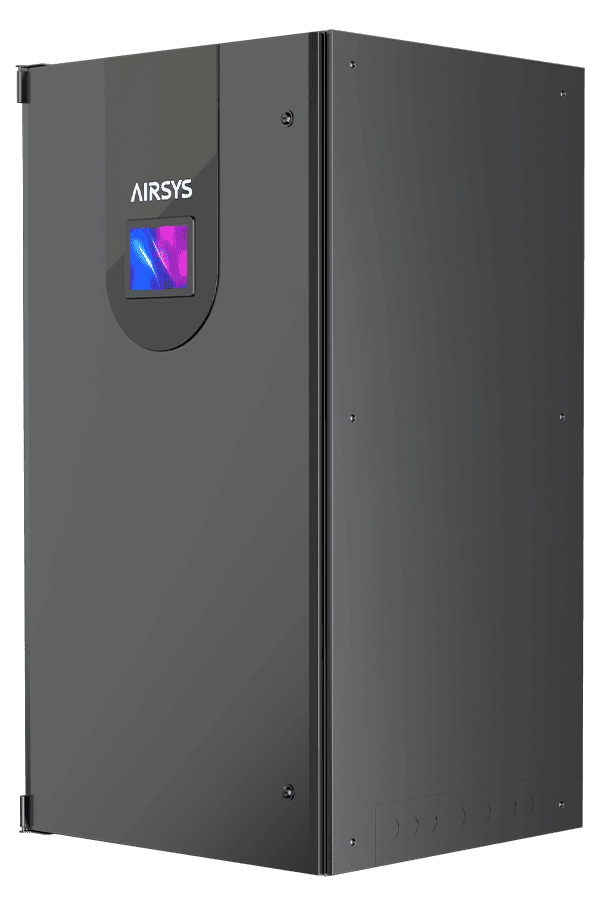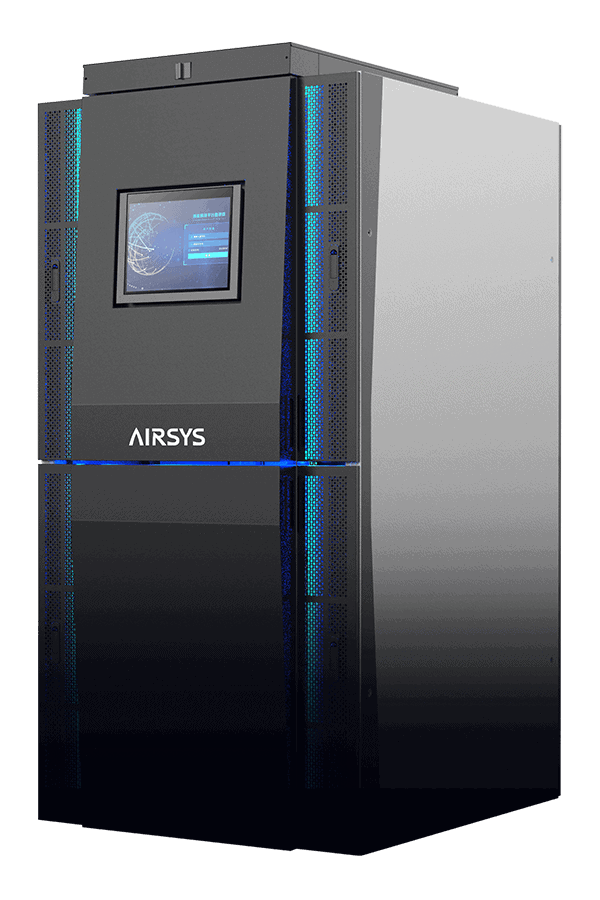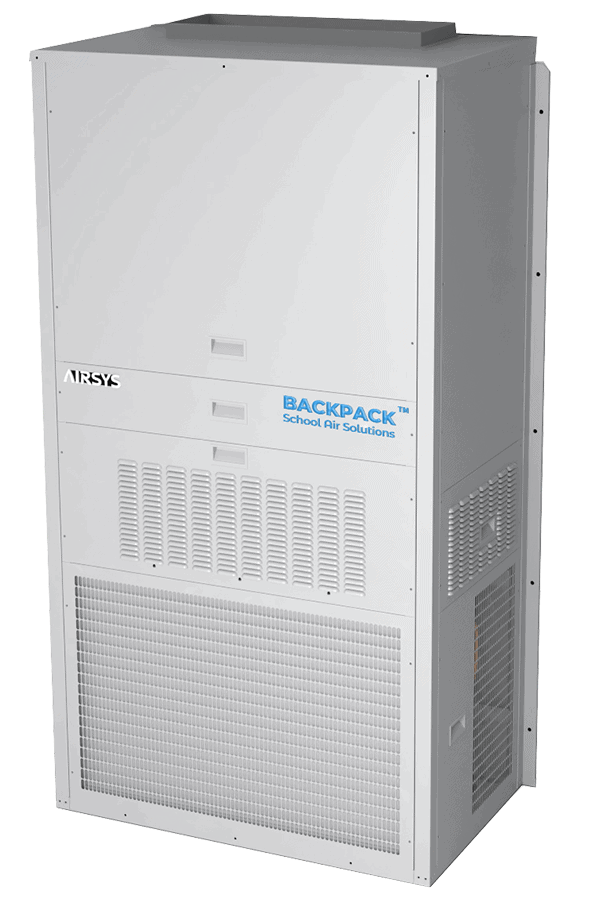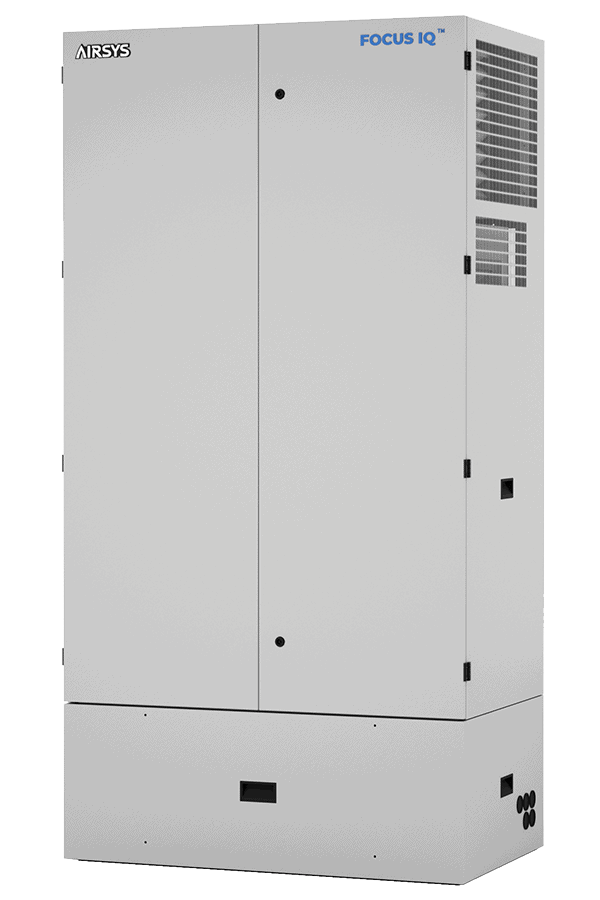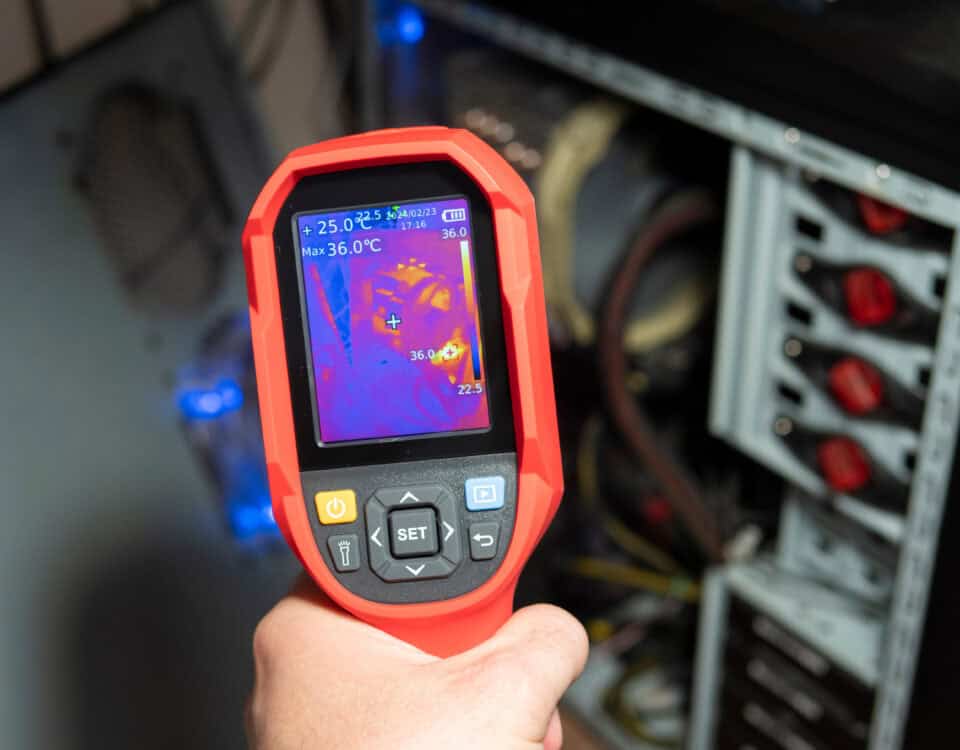
Preventive Maintenance’s Role in Data Center Cooling Systems
September 18, 2024
Introducing the 5-Year Parts Warranty for School Air Solutions Equipment
November 1, 2024The air quality in a data center cannot be fully assessed without considering humidity. Humidity, like temperature, significantly affects the longevity of sensitive equipment and overall data center performance. Still, maintaining optimal humidity levels is an often overlooked aspect of data center management.
To shed light on this crucial topic, we’ve compiled this comprehensive guide, answering some of the most pressing questions about proper humidity control in data centers.
What Are the Risks of Low/High Humidity in a Data Center?
High humidity can lead to condensation, which promotes hardware corrosion and can cause equipment failure. In contrast, low humidity increases the risk of electrostatic discharge (ESD) – a phenomenon where dry air creates static electricity that can cause significant damage to delicate server components. Even minor ESD events can harm microchips, impair device functionality, and risk downtime.
Beyond equipment failure, the consequences of poor humidity control can create a larger negative ripple effect. Data loss, network disruptions, and extended periods of downtime can result in major productivity hits, costly repairs, and compounding expenses, significantly impacting business operations.
What Are Early Signs of Low/High Humidity Levels?
As mentioned, the most visible indicator of high humidity levels in your data center is condensation forming on surfaces, particularly on metallic components. This excess moisture can lead to corrosion, gradually weakening metal structures and increasing the risk of equipment failure. Mold growth can also indicate elevated humidity, as the damp environment encourages mold to thrive.
Detecting low humidity levels can be more tricky, but a key indicator is an increase in static electricity, which may be felt by personnel or observed through small static shocks when touching equipment. Another subtle sign is dust accumulation, as static charges tend to attract more dust particles.
What Is Relative Humidity, and Why Is It Important for Data Centers?
Relative Humidity (RH) measures the percentage of water vapor in the air relative to the maximum it can hold at a given temperature. This means that RH levels are directly affected by temperature fluctuations. Specifically, as the temperature rises, the air can hold more moisture, lowering the RH. Conversely, cooler air holds less moisture, increasing the RH.
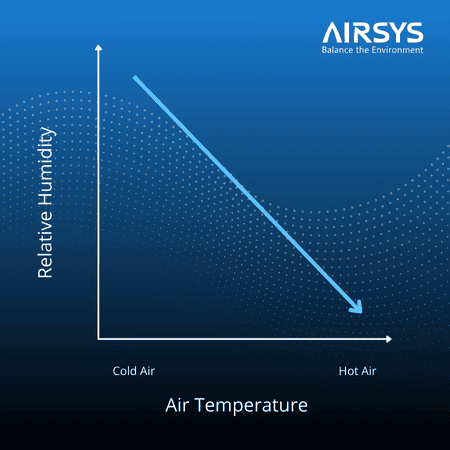
In a data center, measuring “humidity” alone doesn’t provide an accurate picture because it fails to account for air temperature changes. Temperature variations directly affect RH, meaning there’s no constant RH level in a data center. Practically speaking, effective humidity control must always be paired with temperature management to ensure an optimal environment for sensitive equipment in terms of both temperature and humidity.
How Does Humidity Control Affect a Data Center’s PUE?
Humidity control and Power Usage Effectiveness (PUE) in data centers are closely related. PUE is directly impacted by the energy consumed to maintain optimal humidity levels. Typically, humidifiers or dehumidifiers are used to keep RH within the recommended range, and these systems contribute to the overall facility energy consumption.
In addition, managing humidity can indirectly influence PUE, by altering cooling system performance. For instance, higher humidity levels can put more strain on evaporative cooling methods, forcing them to work harder and consume more energy to maintain effective operation.
What Is the Recommended Humidity Level for Server Rooms?
Industry standards for data center humidity levels are set by ASHRAE (The American Society of Heating, Refrigerating and Air-Conditioning Engineers). ASHRAE classifies data center equipment into four categories — A1, A2, A3, and A4 — based on its temperature and humidity sensitivity. Most enterprise servers and storage devices fall into the A1 and A2 categories, which have the strictest environmental requirements. A3 and A4 are generally linked to workstation hardware and PCs, with more relaxed guidelines.
According to ASHRAE’s latest guidelines, for A1 and A2 class data centers:
- Allowable RH range: 20%-80% (“allowable” refers to a broad range within which the equipment can be expected to function properly)
- Recommended RH: 50% (some industry experts extend this percentage to a more extensive range of 45%-55%)
- In environments with high copper and silver corrosion: Keep upper moisture level below 60% RH, and if possible, even under 50%.
While these are standardized guidelines, it’s important to note that variations may exist based on each data center’s unique circumstances.
What Are Some Best Practices for Utilizing Humidity Sensors?
Effective use of humidity sensors is crucial for maintaining optimal data center conditions. Two best practices are strategic sensor placement and using high-quality sensors.
Strategic humidity sensor placement throughout the data center is vital for accurate monitoring. Relying solely on room-wide temperature and humidity levels can be misleading as different areas may experience varying humidity and temperature. Instead, place multiple sensors in each cabinet, particularly near the air intake vents at the front of racks. ASHRAE standards recommend that there should be three sensors per rack. This ensures precise readings of the air entering your equipment.
Sensor quality and reliability are equally important. For instance, at AIRSYS, our cooling products utilize highly sensitive sensors, known for their accuracy and dependability. These high-quality sensors, coupled with custom software, can detect real-time changes in temperature and humidity, enabling rapid responses to environmental fluctuations.
How to Set My Humidity Control Alarm System?
An effective humidity control alarm system is set to trigger notifications based on predefined RH thresholds, delivering early warnings and critical alerts for humidity deviations. For best results, we recommend to implement a two-tiered alert system based on the allowable RH levels set by ASHRAE (20%-80%):
- Tier-One — Early Warning Thresholds: Set initial alerts when RH drops below 40% or rises above 60%, allowing for proactive adjustments before conditions become critical.
- Tier-Two —Critical Alert Thresholds: Set critical alerts when RH falls under 30% or exceeds 70%, as these levels can pose immediate risks to equipment.
This tiered approach provides a buffer for corrective action, helping prevent both the risks associated with low humidity and high humidity. Remember to integrate these alerts with your overall data center management system and to regularly review and adjust these thresholds based on your specific equipment conditions.

How to Monitor My Data Center RH Levels?
As was mentioned earlier, installing multiple humidity sensors and setting up a humidity control alarm system are just two steps data center operators can take for humidity monitoring. For more comprehensive coverage, consider using hygrometers to measure moisture content in the air and pair them with temperature sensors for a complete environmental picture. You can also consider precision cooling solutions, which offer targeted environmental control to ensure both temperature and humidity remain within optimal ranges.
Whenever possible, choose a monitoring system that integrates IoT capabilities, which allows for continuous data collection and remote monitoring. Review your data regularly as part of your facility’s preventative maintenance routine, ensuring that your data center remains a safe and stable environment for your critical IT infrastructure.
While numerous devices are available to monitor humidity, it’s recommended that operators collaborate with their cooling system manufacturers to find a solution that best fits their needs.
Effective Humidity Control Is A Cornerstone of Successful Data Center Management
If you’ve ever questioned the significance of humidity control in data centers, we hope this article has clarified why it’s essential and how to manage it effectively. Simply put, humidity control is an inseparable aspect of sustainable, stable, and successful data center management.
At AIRSYS, we understand the complexities of data center environmental control and are committed to pushing the boundaries of what’s possible in cooling and air management. For over 20 years, our experts have been delivering cutting-edge data center cooling solutions designed to meet the needs of both modern and future data centers. Whether you’re seeking to upgrade your current system, need expert guidance on best practices, or want to explore how our innovative cooling solutions can optimize your data center, contact us today.

